Paris, BnF, lat. 11127
Dialectic, Rhetoric and the Logica vetus1
Paris, BnF, lat. 11127 contains a number of dialectical and rhetorical works, including many of the commentaries of Boethius associated with the teaching of the logica vetus. It was copied by a number of scribes. As this picture shows (ff. 119v-120r), the changeover between scribes often took place at the end of quires.

https://gallica.bnf.fr/ark:/12148/btv1b90680770
Here we see a number (‘xv’) which marks the end of the quire, while the first words of the next gathering are also indicated. This helped ensure the correct ordering of the gatherings.

https://gallica.bnf.fr/ark:/12148/btv1b90680770
A Monastic Production
Paris, BnF, lat. 11127 was produced in the monastery of Echternach, a famous centre of learning in the Carolingian period. It was copied c. 1000 and would have been used in the monastic school. The streaks on the parchment here (f. 2r) were made during the preparation of the parchment, as the maker scraped hairs off the skin.


https://gallica.bnf.fr/ark:/12148/btv1b90680770
Strategies of critical reading
These examples show some of the strategies of presentation which were used to help the reader distinguish arguments within the texts. On f. 30v, we see that red ink was used to indicate the words of Aristotle himself (the Latin translation of his On interpretation), while black ink was used for Boethius’s commentary and explanations.
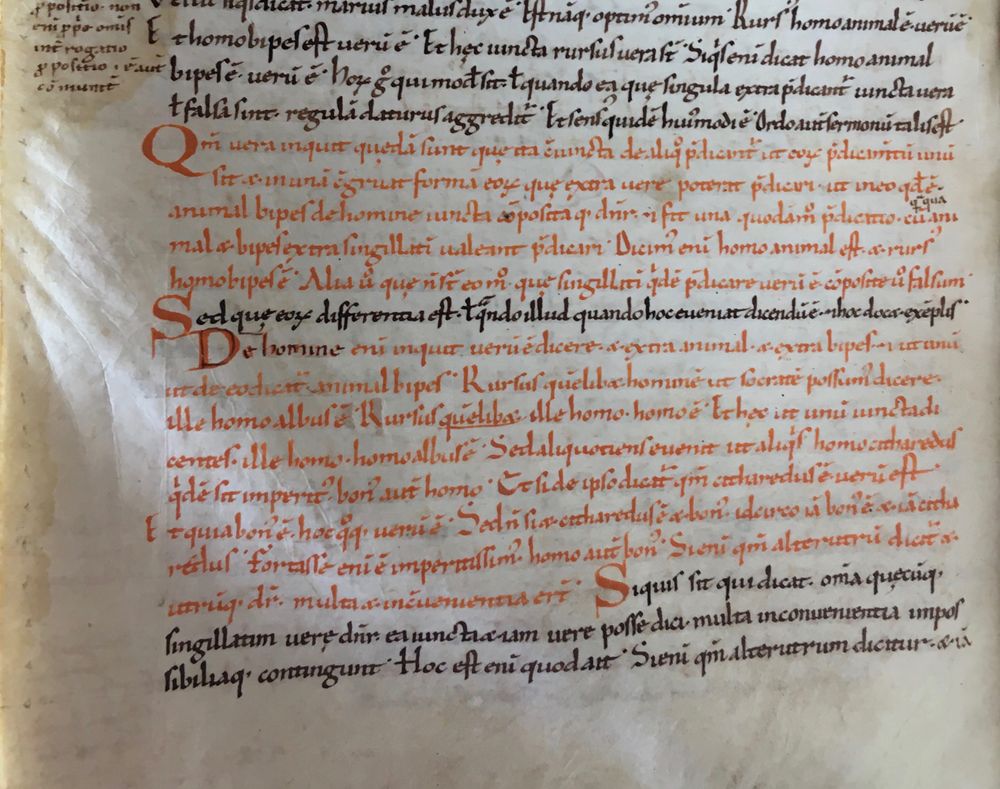

https://gallica.bnf.fr/ark:/12148/btv1b90680770
In this case (f. 161r) underlining is used to highlight some passages, which are also accentuated by dashing at the edge of the page. The text is Boethius’s On hypothetical syllogisms, one of his textbooks on logic. These techniques of emphasis allowed the reader to distinguish between the examples and explanations provided by Boethius. The words ‘Glossa est’, ‘This is a gloss’, added in the margins, further emphasised the distinction.


https://gallica.bnf.fr/ark:/12148/btv1b90680770
Understanding dialectic
Here we can see how glossators to Boethius’s commentary on Aristotle’s On interpretation, focused (f. 30r) on aspects of dialectic. The scheme in the upper margin parses elements of the text to distinguish between dialectical questioning (which involves matters of contention) and non-dialectical questioning (essentially involving matters of fact).

https://gallica.bnf.fr/ark:/12148/btv1b90680770
A note in the outer margin provides the definition of dialectic attributed to Augustine. Dialectic is ‘bene disputandi scientia’, the science of arguing well. This gloss adds a Christian authority to Boethius’s commentary.
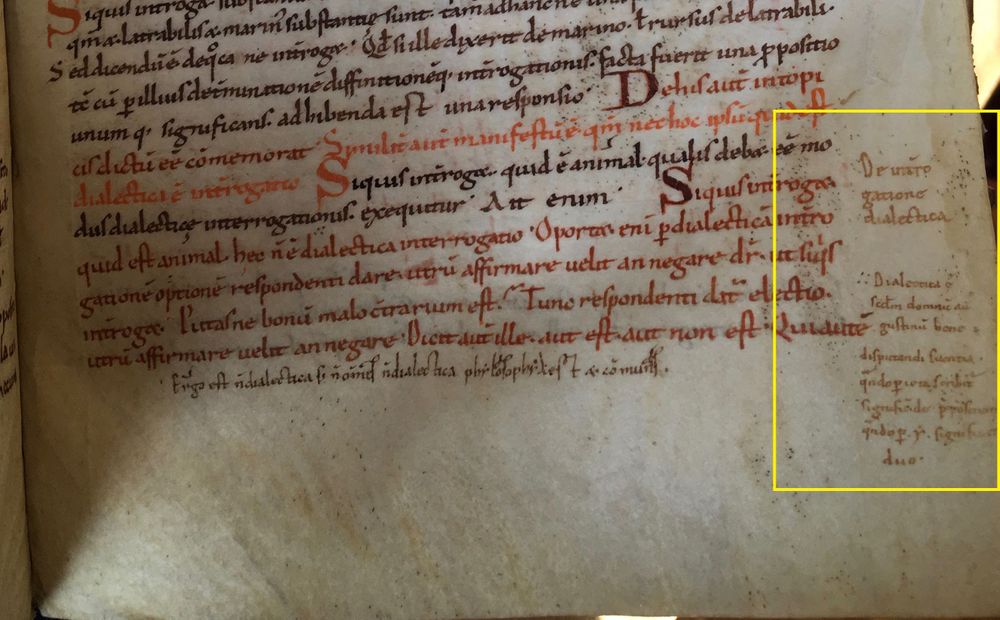
https://gallica.bnf.fr/ark:/12148/btv1b90680770
As the glosses to f. 30r showed, readers at Echternach consumed classical dialectical works within a Christianised curriculum, mixing the authority of Aristotle with that of Augustine. On f. 64r we see further evidence of how readers combined classical and Christian sources. Here two passages have been provided from Cassiodorus’s introduction to secular learning, Institutiones II, written in the mid-sixth century. The extracts (II.3.345-59), include a list of the most significant works pertinent for dialectical study, such as those of Boethius, Apuleius, Cicero and Victorinus. This list, a sort of idealised curriculum, must have served as a sort of blueprint for study for the users of this manuscript.
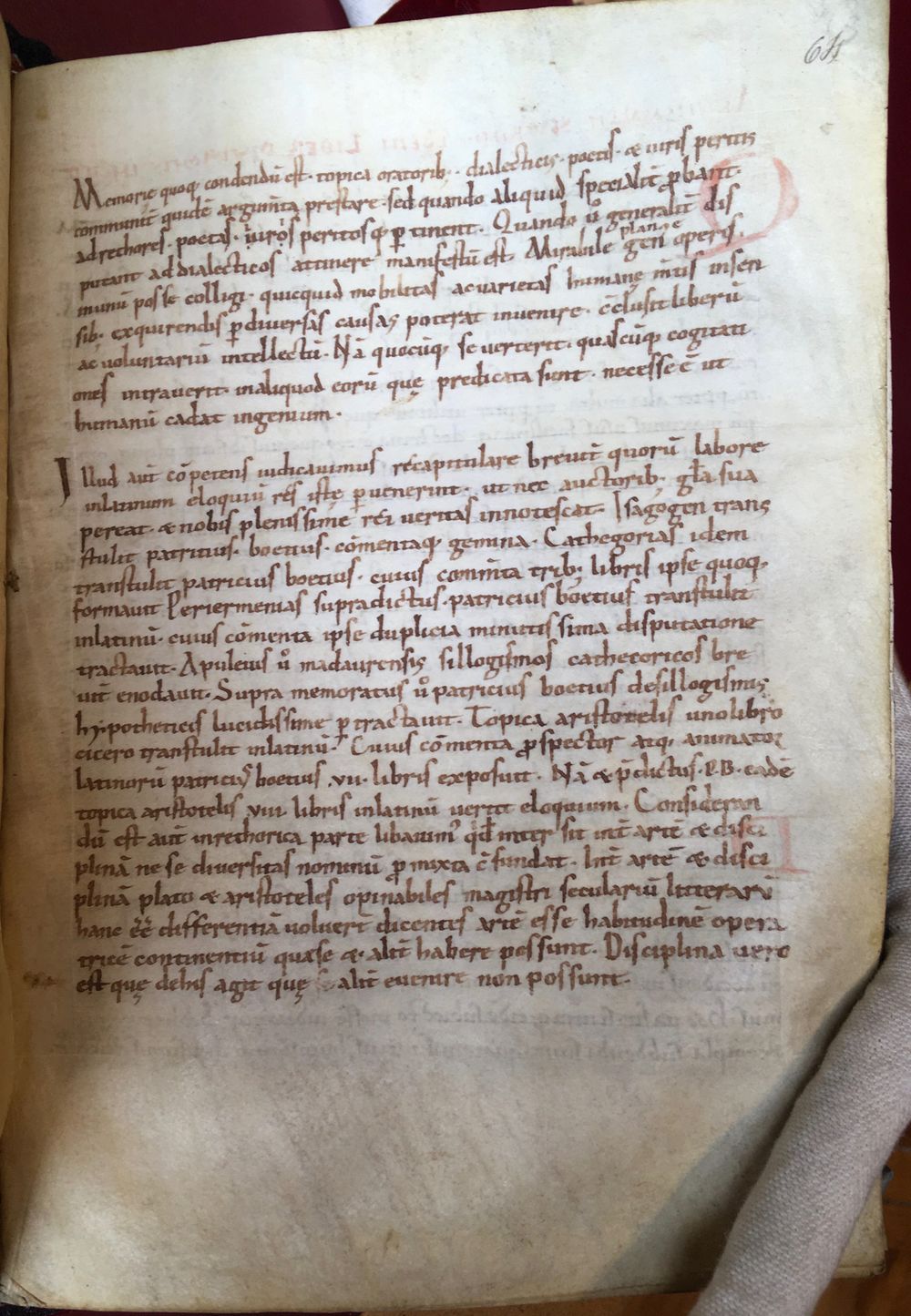

https://gallica.bnf.fr/ark:/12148/btv1b90680770
Glossing Practices
The manuscript is glossed by multiple hands. On f. 8v, one glossator has added the word ‘yppocentarus’, centaur, in the margin. The mythical beast is mentioned in the text, and was apparently sufficiently exotic to merit a highlight! Small tie-marks, here shaped like a ‘z’, are used to link notes in the margin to the text.


https://gallica.bnf.fr/ark:/12148/btv1b90680770
It is easy to differentiate between two layers of gloss here in the margin of f. 24r as they are written in two different colour inks, with the gloss in dark ink working around the gloss in light ink. The gloss in the lighter ink includes a ‘nota’ sign, drawing emphasis to the adjacent passage of text.

https://gallica.bnf.fr/ark:/12148/btv1b90680770
Some pages of the manuscript are more extensively glossed than others, such as f. 49r. The intensity of glossing here suggests that this section was of particular interest to users of this manuscript.














https://gallica.bnf.fr/ark:/12148/btv1b90680770
https://gallica.bnf.fr/ark:/12148/btv1b90680770
https://gallica.bnf.fr/ark:/12148/btv1b90680770
https://gallica.bnf.fr/ark:/12148/btv1b90680770
https://gallica.bnf.fr/ark:/12148/btv1b90680770
https://gallica.bnf.fr/ark:/12148/btv1b90680770
https://gallica.bnf.fr/ark:/12148/btv1b90680770
A few rhetorical texts are included in Paris, BnF, lat. 11127, but these received less attention from the glossator. As we can see, for example, the text of the fourth book of Boethius’s De differentiis topicis (on rhetoric), which starts halfway down f. 94r, is almost wholly unannotated. While books I-III of De differentiis topicis, which concerns dialectic, were heavily glossed, book IV barely received any attention from annotators. It is clear that dialectic, not rhetoric, was the subject of most interest to the users of this manuscript.
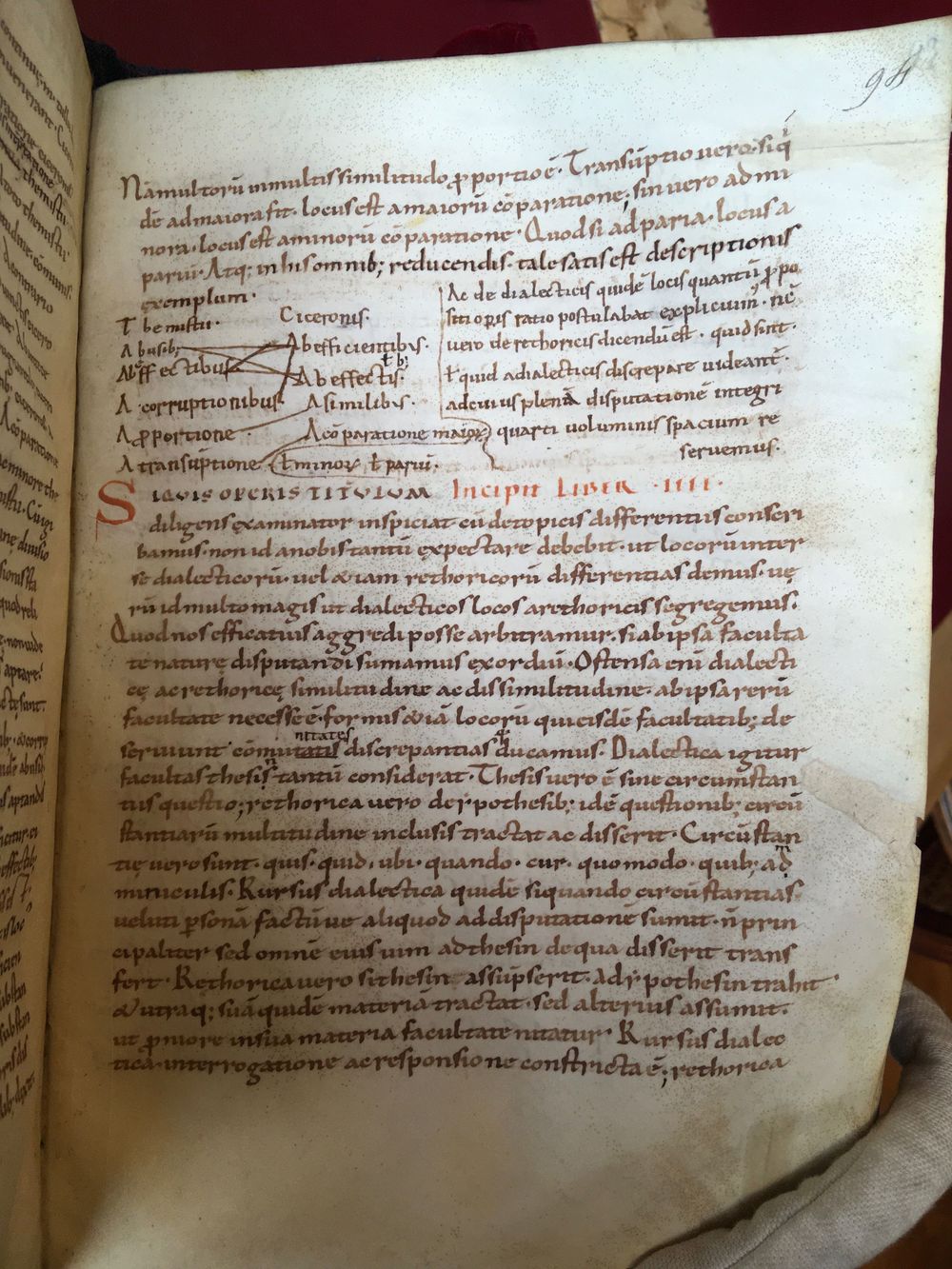

https://gallica.bnf.fr/ark:/12148/btv1b90680770
At the end of f. 93r a glossator, working in darker ink than the main scribe, has carefully reworked part of the text of the third book of Boethius’s De differentiis topicis. Missing text has been provided and a note in the lower margin refers to a missing ‘figura’, diagram, that should accompany this passage.


https://gallica.bnf.fr/ark:/12148/btv1b90680770
Indeed, the diagram is found on f. 94r, where it is added before the introductory rubric to book IV, written over an erasure.


https://gallica.bnf.fr/ark:/12148/btv1b90680770
Logical Schemata
One of the striking features of Paris, BnF, lat. 11127 is the number and variety of schemata scattered throughout the manuscript. Space was provided for some of these within the textblock, and they were ornamented with red ink. Two renderings of ‘squares of opposition’ indicating relationships between propositions were added on f. 14r.


https://gallica.bnf.fr/ark:/12148/btv1b90680770
These two schemata from f. 37v represent different ways of visualising and tabulating contradictory statements. For example, ‘Possibile esse’, ‘possible to be’ can be negated as ‘non possibile esse’, ‘not possible to be’.




https://gallica.bnf.fr/ark:/12148/btv1b90680770
https://gallica.bnf.fr/ark:/12148/btv1b90680770
These linked letters, added by another glossator, in the margin of f. 132v model the relationships of terms in propositional sentences (Boethius, On categorical syllogisms 811A-D). Letters can be substituted for terms, ‘a’ for ‘just’ or ‘b’ for ‘good’ etc. These sketched relations helped the reader follow the text, as well as bringing out the universality of Boethius, and in turn Aristotle’s, conclusions – it doesn’t matter what ‘a’ and ‘b’ stand for, what matters is how they relate to each other.
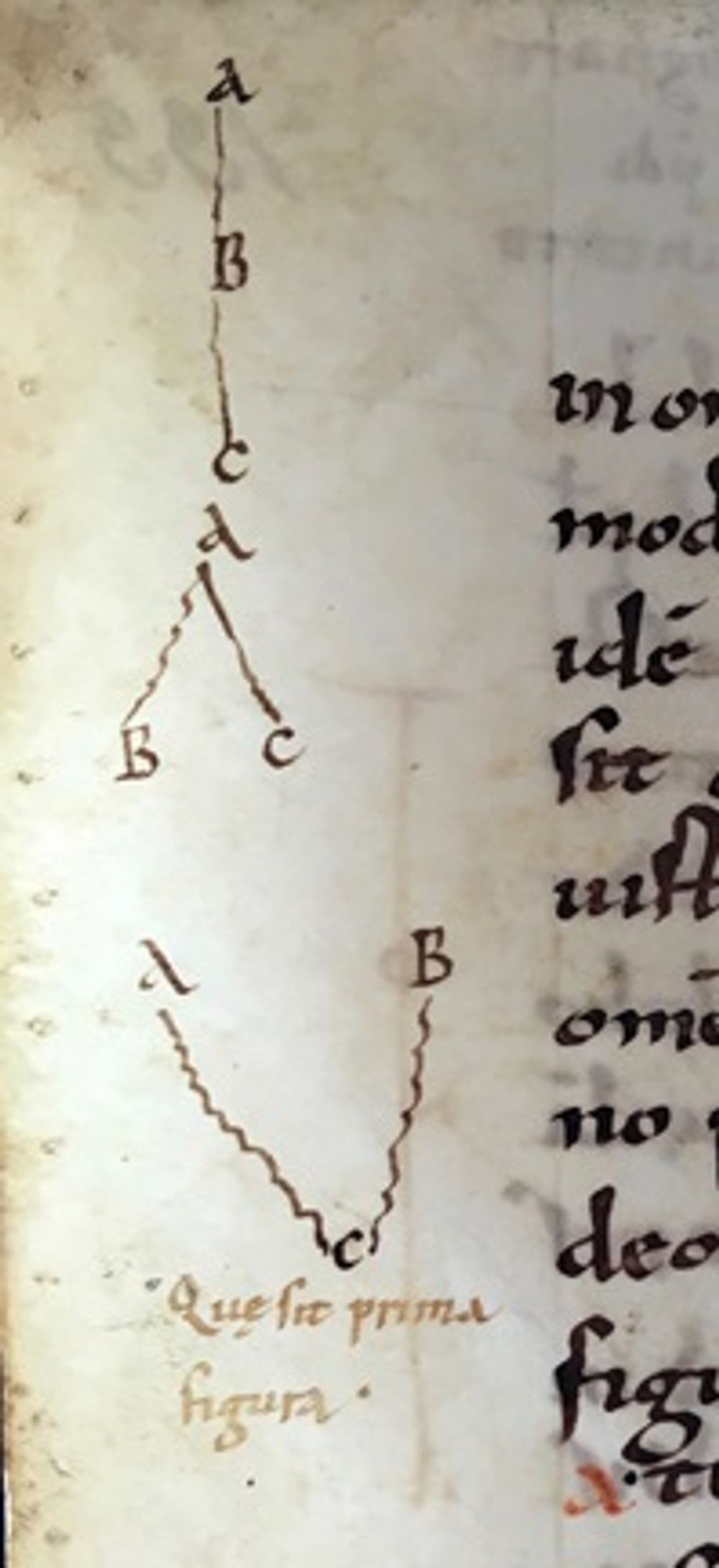
https://gallica.bnf.fr/ark:/12148/btv1b90680770
Here in the lower margin of f. 129v a glossator has picked up set of propositions from the text (Boethius, On categorical syllogisms 806C-D) and presented them in a ‘square of opposition’ indicating how they can be converted per accidens. Here ‘no man is able to neigh’ converts ‘by accident’ (that is, by interchanging the subject and predicate and changing the universal statement into a particular one) to ‘Something that is able to neigh is not a man’. However ridiculous the propositions, the same processes of logical reasoning applied!
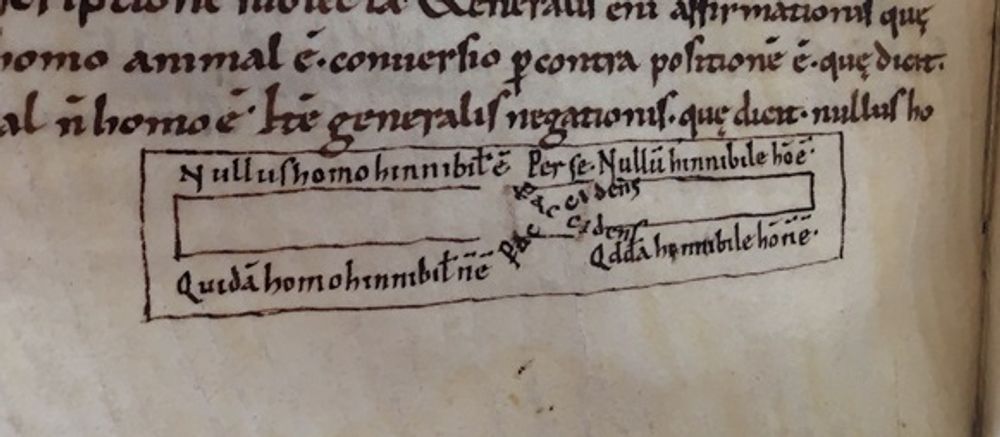

https://gallica.bnf.fr/ark:/12148/btv1b90680770
Education at Echternach
On ff. 62v-63r of the manuscript, we find letters from the collection of one of the most famous medieval teachers of this period, Gerbert of Aurillac (946-1003), later Pope Sylvester II. These letters (39-41), describe an argument between Bishop Dietrich of Metz and Charles, Duke of Lorraine, and were probably included here as an example of rhetorical style (ars dictaminis). As well as providing examples of the language of argument and debate, these letters, associated with a famous scholar of the day, illustrate Echternach’s links with other scholastic centres of this period.
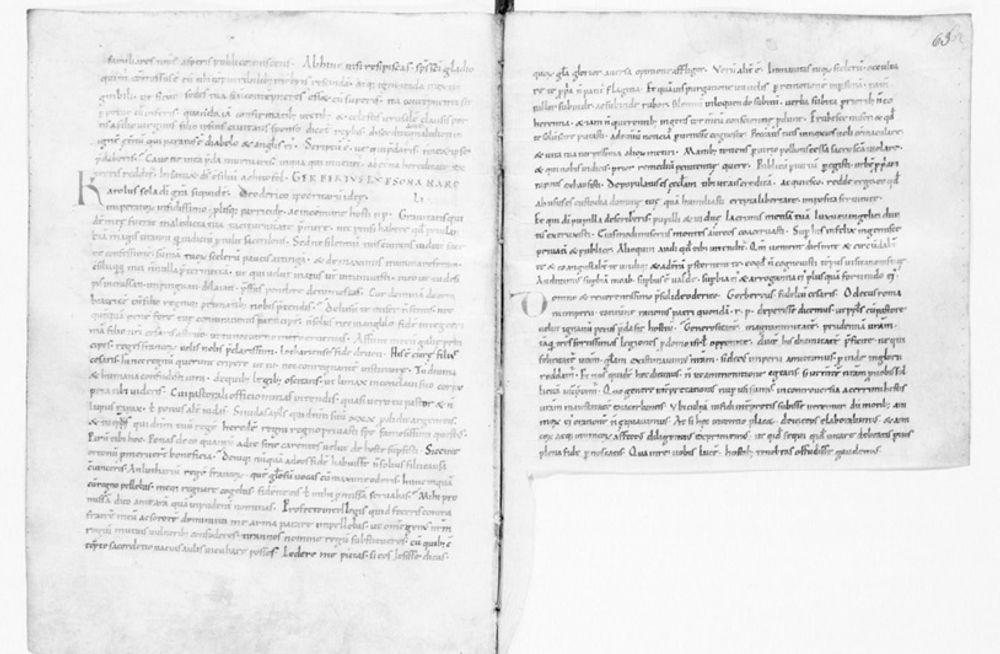

https://gallica.bnf.fr/ark:/12148/btv1b90680770
Dialectic and the school curriculum
Dialectic was not studied within a vacuum, but was part of a broader curriculum of texts and understood within a broader context of received wisdom from the classical world. This is nicely illustrated by manuscript Paris, BnF, lat. 11127 where (f. 170v) the dialectical works are immediately followed by De astronomica, a work on astronomy attributed to the Roman writer Hyginus. This work, which combined mythology and astrology, was popular in the medieval schools. Although its inclusion here might appear to be ‘off topic’, it, in fact, showcases the variety of subjects which were deemed essential to medieval education.


https://gallica.bnf.fr/ark:/12148/btv1b90680770
Sources used for this contribution:
- Cassiodorus, Cassiodori Senatoris Institutiones, ed. R. A. B. Mynors (Oxford, Clarendon Press, 1961)
- Gerbert of Rheims, The letters of Gerbert: with his papal privileges as Sylvester II, ed. and trans. H. P. Lattin (New York, Columbia University Press, 1961)
- Magee, J., Boethii, De divisione liber: Critical edition, translation, prolegomena and commentary (Leiden, Brill, 1998)
- Marenbon, J., Boethius (Oxford, Oxford University Press, 2003)
- Migne, J.-P. (ed.), Patrologia Latina, vol. 64
- Riché, P., ‘Nouvelles recherches sur les lettres de Gerbert d’Aurillac’, Comptes rendus des séances de l’Académie des Inscriptions et Belles-Lettres (131-3, 1987), 575-85
- Saenger, P., Space between words: The origins of silent reading (Stanford, Stanford University Press, 1997)
Contribution by Irene O’Daly.
Cite as, Irene O’Daly, “Paris, BnF, lat. 11127”, The art of reasoning in medieval manuscripts (Dec 2020), https://art-of-reasoning.huygens.knaw.nl/lat11127. ↑


